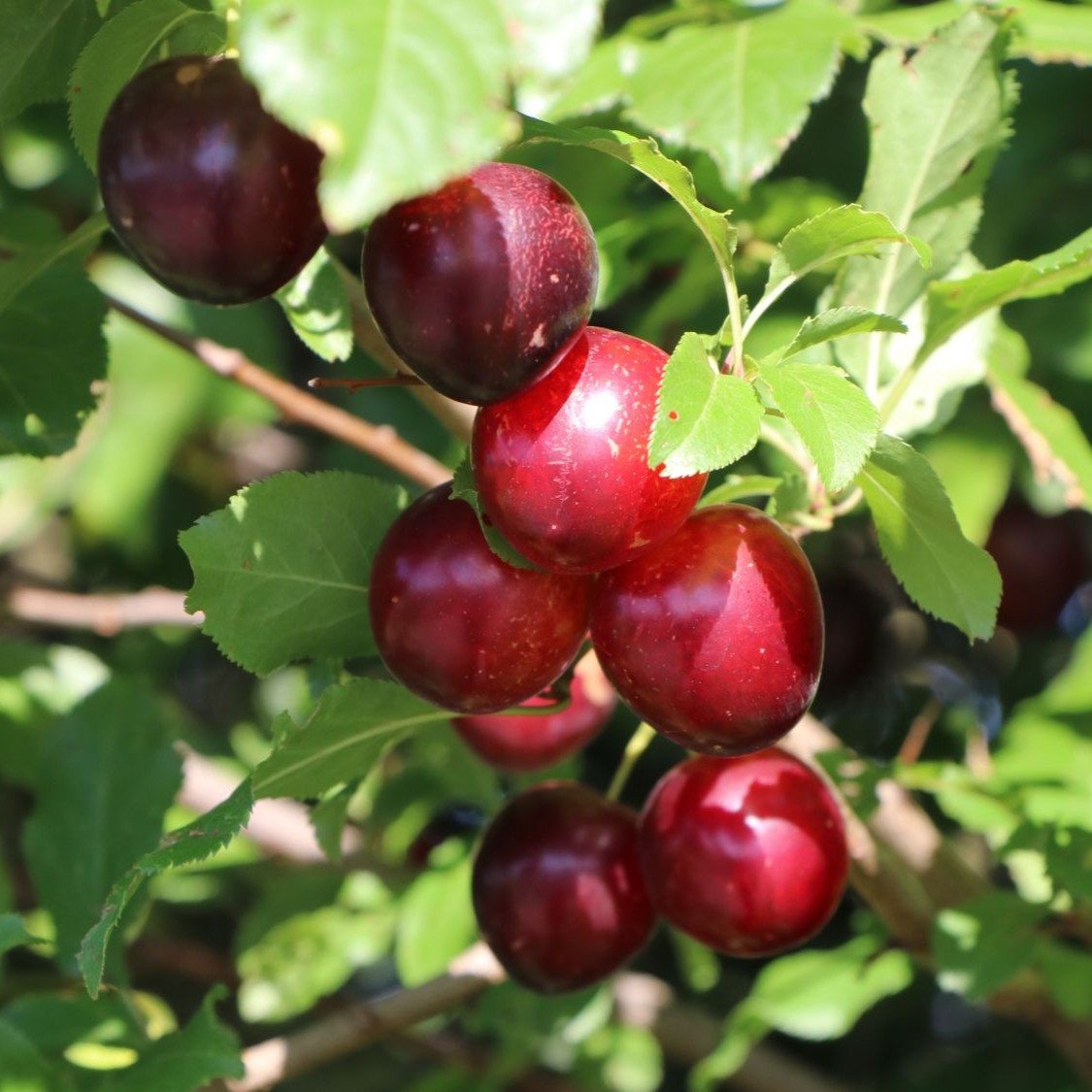Plum

Plum
Prunus cerasifera
Plant family
Rose family (Rosaceae)
Season Overview
Propagating
Planting
Harvest
Harvest
J
F
M
A
M
J
J
A
S
O
N
D
1ST YEAR
FOLLOWING YEARS
Details
Light requirement
Sunny
Water requirement
Dry
Soil
Medium (loamy)
Nutrient requirement
Medium
Dark germinator
Germination temperature
18 - 22 °C (Degrees Celsius)
Plant distance
400 cm
Row spacing
400 cm
Seeding depth
2.5 cm
Instructions
Description
Plums belong to the plum family and both belong to the rose family. Compared to the classic plum, damsons are slightly longer and smaller with a darker, usually deep purple skin. Another typical feature of plums is the stone, which can be easily removed from the flesh, making them ideal for cooking or baking. Plums are particularly popular in traditional baking recipes for plum cake. But they are also very suitable for compote, jam or chutneys. They are typically harvested in late summer/autumn and often keep longer than other plum varieties. Due to their firmness, they keep their shape when cooked and baked, which distinguishes them from many other types of plum.
Origin:
Klein-, Mittelasien
Growing tips
When sowing, it is important to note that plum seeds require a preceding cold period (so-called stratification) before they germinate. This requires temperatures between 0 and 5 degrees Celsius. After the cold period, the seeds then germinate in spring at warmer temperatures (between 10 and 15 degrees Celsius). Normally, however, plum trees are not grown from seed, but are purchased as grafted young trees. You can plant the young trees either in the fall or spring. Most plum trees are cross-pollinators, which means that they need another plum tree nearby in order to bear fruit.
Companion Plants
Antagonistic Plants
Aubergine / Eggplant
Basil
Common mugwort
Courgette / Zucchini
Cucumber / Gherkin
Farne
Iris
Katzenminzen
Lovage
Mint
Okra
Ornamental pumpkin
Peony
Pepper / Paprika
Potato
Pumpkin / Squash
Rhubarb
Sweet potato
Tomato (Bush tomato)
Tomato (Cocktail bush tomato)
Tomato (Cocktail Stake Tomato)
Tomato (Stake tomato)
Walnut family
Wild Cherry / Bird Cherry / Sweet Cherry
Diseases
Root Rot
Pests
Spotted wing drosophila
Spider mites
Common winter moth
Aphids